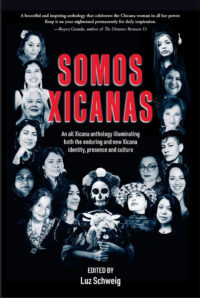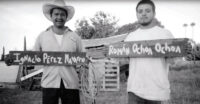During the particularly tense night of October 11, I received a phone call from one of my Oaxacan friends. She was watching news reports of the Northern California fires and wanted to know if I was all right.
After we had discussed the number and location of fires and the frightening dilemma of staying or evacuating, our conversation turned to the spiritual. My amiga spoke of the Mayan ancestors’ belief in the four elements: earth, water, air, and fire, pointing out that humans were currently feeling the intense power of each of these elements.
Certainly Houston, Florida, and Puerto Rico were suffering the effects of hurricane strength waters and winds followed by mudslides. In Puebla and Chiapas, Mexico experienced two of the strongest earthquakes in the past 30 years. Californians are always aware of the potential for earthquakes, but few Sonomans were expecting the “Big One” to come in the form of relentless flames and ash.
Modern scientists can provide data to predict and track hurricanes, analyze the shifting of tectonic plates, and research the causes of firestorms. I respect and pay attention to their expertise, but the emotional bombardment of recent disasters has me searching for a less measureable interpretation.
What is happening? What message is the universe relaying with these multiple disturbances to our existence? I reached out to some of my friends who study and live according to laws of spirit and nature as taught by their ancestors.
Rhina, a young indigenous woman, believes that much of the world’s population is spiritually disconnected from earth and nature. She states that modern people don’t believe that everything has a spirit.
She referred me to the words of Hopi elder Floyd Red Crow Westerman who used trees as an illustration of our interdependence with nature. He said that trees take in carbon dioxide and emit oxygen while humans breathe in oxygen and exhale carbon dioxide. This symbiotic relationship is healthy and natural and necessary for life. When the atmosphere is corrupted by human activity such as pollution or destruction of habitat, there will be a reaction to both environment and man.
The elder went on to remind us of our critical relationship with water as human bodies are composed of 60 percent water. Prior to colonization in America, the water was clean because the indigenous people respected water as one of their basic elements, but when water became a commodity for commerce with disregard for its spirit, it turned toxic or disappeared entirely. Humans, animals, and plants suffer as a result.
Another amiga, curandera Mari Dreamwalker, related a point that became obvious during the smokiest apocalyptic days of the fires. She described the healing power of sound, the vibrations that keep us alive. In nature, these sounds come from animals: the dolphins, the wolves, the birds. During that week in October, birds were absent. It was eerily quiet, adding to the unsettled feeling of danger and death.
My friend Rhina adds that Creation has been suffering for a long time. It is affected by actions taking place on earth, such as war, injustice, genocide, rape, and slavery, and to earth, such as contamination and destruction of natural resources, all of which generate bad energy. The ultimate natural law of karma will result.
Coincidently but not surprisingly, this month a National Climate Assessment released by the government concluded that climate change is entirely driven by human activity, and we will see more extreme heat, drought, wildfires, as well as excessive storms, rainfall, and floods. Scientists warned that they could not foretell which changes in the climate system may create “…new states very different from those experienced in the past.” Sounds like the ultimate natural law of karma again.
I do think the fires have changed Sonoma, at least temporarily. Besides diminishing earth’s physical attributes, disasters have a way of making people humble. People have been kinder to one another and seemingly living in a more spiritual way.
During this time of recovery and transition, people may react in different ways. Some want to celebrate, but others are grieving, grieving the loss of life, homes, memories, peace. The curandera advises that we slow down and allow ourselves to heal, for part of our spirit leaves during times of susto or fear. She jokingly says not to use a candle this time, but to engage in ritual whether public or private, share stories, and pay tribute to earth and our place in it.
As I look out the window, I am comforted by the noisy chirping of towhees and sparrows as they hungrily feed on seeds.




Red Crow was not Hopi. He was born Floyd Westerman on the Lake Traverse Indian Reservation, home of the Sisseton Wahpeton Oyate, a federally recognized tribe that is one of the sub-tribes of the Eastern Dakota section of the Great Sioux Nation, located in the U.S. state of South Dakota.